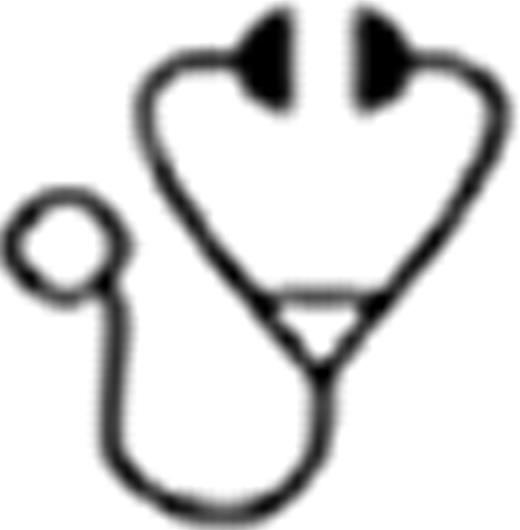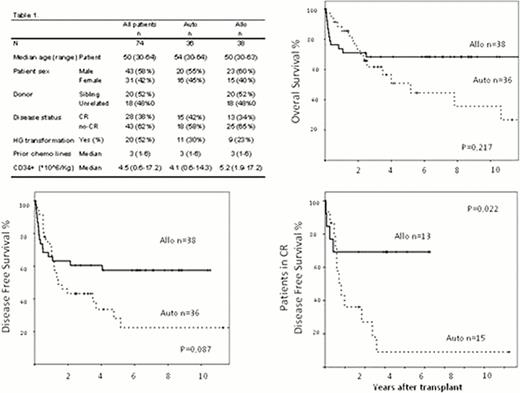Abstract
Follicular Lymphoma is the most common indolent lymphoma, characterized by an indolent course, multiple recurrence, responses to chemotherapy, risk of transformation into a high grade lymphoma and with a median overall survival of 10–12 years. Transplantation (autologous and allogeneic) has improved the overall outcome of this disease, however a continuous pattern of relapse is observed essentially in the autologous setting. Allogeneic transplant has shown encouraging results in terms of long term overall survival (OS) and disease free survival (DFS), with acceptable transplant related mortality (TRM) and with significantly lower relapse rate.
To analyse retrospectively the outcome of relapsed follicular lymphoma patients who received BCNU (carmustine), cytarabine, etoposide, melphalan-alemtuzumab allogeneic HSCT (BEAM-C allo) or BEAM-autologous HSCT (BEAM-auto).
The study includes 74 consecutive patients with relapsed advanced stage follicular lymphoma who received BEAM-C allo (n=38) and BEAM-auto (n=36) between 1992 and 2010. Patients characteristics are summarized in Table 1. Median follow-up of surviving patients was 6.1 years. Patients undergoing allo transplants were younger than those who unbderwent and autologous procedure (50 vs 54 years, p=0.018). 1y and 5y TRM was higher in the allo transplant group (27% and 27% vs 6% and 6%; p=0,011). The Cumulative incidence of relapse (CIR) was lower in the allo at 1, 2 and 5 years (11%, 14% and 18% vs 28%, 49% and 60%, p=0,000).
Significant differences were not observed in 1, 2 and 5 years OS between allo and auto transplant groups (74%, 74% and 69% vs 85%, 69% and 51%; p=0,217), but we found a strong trend in DFS difference between both groups at 1, 2 and 5 years (65%, 61% and 58% vs 69%, 43% and 33%; p=0.089) observing a plateau around 60% after 2 years in the allograft group.
The rate of graft versus host disease (GvHD) was low with 14% acute GvHD (2.6% grade 3–4 GvHD) and 28% chronic GvHD (10% of extensive chronic GvHD).
Analysis of the whole cohort (n=74) showed that patients in CR before transplant (n=28) had better 1, 2 and 5 years DFS following a allotransplant (69%, 69% and 69% vs 79%, 36% and 18%; p=0.012). These differences did not affect the 1, 2 and 5 years OS (76%, 76% and 76% vs 93%, 76% and 56%; p=0,214). TRM for the allo transplant group was 24% and 0% R in the auto (p=0,064) in patients when achieved CR before transplant. There were no difference in OS (p=0,785) and DFS (p=0,954) between allo or auto patients in partial response (PR) before transplant.
A subgroup analysis of patients with high grade transformation before transplant did not show any differences in OS (p=0,823) or EFS (p=0,526).between allo and auto groups.
Long term follow-up of Follicular Lymphoma patients has shown a continuous pattern of relapse when patients receive an autologous transplant, after 5 years. whereas patients undergoing allo transplant, despite a higher mortality, have a 5 year OS and DFS of 60% with a plateau been achieved in both curves after 2 years suggesting that these patients may be cured. Prospective randomised studies are still required to answer the the role of these two approaches in follicular Lymphoma.
No relevant conflicts of interest to declare.

This icon denotes a clinically relevant abstract
Author notes
Asterisk with author names denotes non-ASH members.



This feature is available to Subscribers Only
Sign In or Create an Account Close Modal